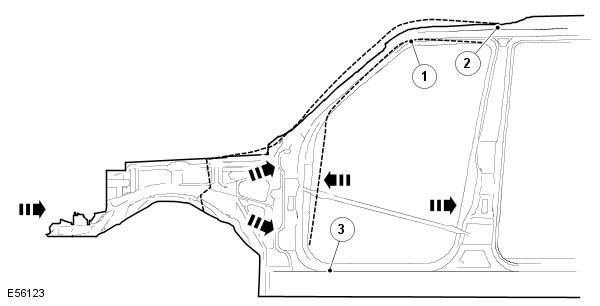NOTE: Forces are transmitted through vehicle components such as axle shafts and trailer attachments (trailer). If the car has been hit from behind, then all connected body elements and mechanical elements should be fully checked (e.g. gearbox mounts). Check the electronic components to make sure they are working properly.
In addition, it is possible to set the entire amount of damage, starting with the direction and magnitude of the impact forces. This however requires extensive knowledge regarding body structure.
If, for example, the impact fell on the front left side member, the right side member due to the rigidity of the body structure (the presence of a crossbar) usually also affected. Often the length of this spar will not change, but due to the rigidity of the body structure, it may move from its original position (often only very little). If any deviations are present, this can usually be detected by checking the size of the gaps between the door and the wing or by checking for changes in dimensions.
In the case of more severe impacts, the body front cannot absorb all the impact energy, and the occupant area is also deformed. Here, the impact energy is transmitted through the spar to the rack "A" (see diagram). This leads to deformation in the area of the roof and door sill.
The body reacts to side impacts in a completely different way, since there are practically no crumple zones here. Because the occupant area is extremely stable, there are relatively minor local deformations at the impact site. However, the force of the impact is transferred to the entire floor panel, often resulting in the car taking the shape of a banana.
Impact energy is transmitted through the spar to the rack "A":

| Pos. | spare part no | Name |
| 1 | - | Warp zone - roof beam |
| 2 | - | Warp zone - roof |
| 3 | - | Warp Area - Door Sill Panel |
Comments on this article